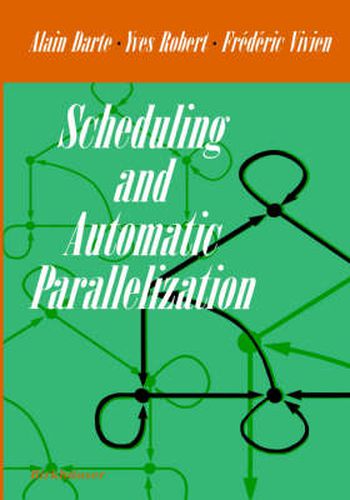Readings Newsletter
Become a Readings Member to make your shopping experience even easier.
Sign in or sign up for free!
You’re not far away from qualifying for FREE standard shipping within Australia
You’ve qualified for FREE standard shipping within Australia
The cart is loading…






This title is printed to order. This book may have been self-published. If so, we cannot guarantee the quality of the content. In the main most books will have gone through the editing process however some may not. We therefore suggest that you be aware of this before ordering this book. If in doubt check either the author or publisher’s details as we are unable to accept any returns unless they are faulty. Please contact us if you have any questions.
Readership This book is devoted to the study of compiler transformations that are needed to expose the parallelism hiddenin a program. This book is notan introductory book to parallel processing, nor is it an introductory book to parallelizing compilers. Weassume thatreaders are familiar withthebooks High Performance Compilers for Parallel Computingby Wolfe [121] and Super- compilers for Parallel and Vector Computers by Zima and Chapman [125], and that they want to know more about scheduling transformations. In this book we describe both task graph scheduling and loop nest scheduling. Taskgraphschedulingaims atexecuting tasks linked by prece- dence constraints; it is a run-time activity. Loop nest scheduling aims at ex- ecutingstatementinstances linked bydata dependences;it is a compile-time activity. We are mostly interested in loop nestscheduling,butwe also deal with task graph scheduling for two main reasons: (i) Beautiful algorithms and heuristics have been reported in the literature recently; and (ii) Several graphscheduling, like list scheduling, are the basis techniques used in task ofthe loop transformations implemented in loop nest scheduling. As for loop nest scheduling our goal is to capture in a single place the fantastic developments of the last decade or so. Dozens of loop trans- formations have been introduced (loop interchange, skewing, fusion, dis- tribution, etc.) before a unifying theory emerged. The theory builds upon the pioneering papers of Karp, Miller, and Winograd [65] and of Lam- port [75], and it relies on sophisticated mathematical tools (unimodular transformations, parametric integer linear programming, Hermite decom- position, Smithdecomposition, etc.).
$9.00 standard shipping within Australia
FREE standard shipping within Australia for orders over $100.00
Express & International shipping calculated at checkout
Stock availability can be subject to change without notice. We recommend calling the shop or contacting our online team to check availability of low stock items. Please see our Shopping Online page for more details.
This title is printed to order. This book may have been self-published. If so, we cannot guarantee the quality of the content. In the main most books will have gone through the editing process however some may not. We therefore suggest that you be aware of this before ordering this book. If in doubt check either the author or publisher’s details as we are unable to accept any returns unless they are faulty. Please contact us if you have any questions.
Readership This book is devoted to the study of compiler transformations that are needed to expose the parallelism hiddenin a program. This book is notan introductory book to parallel processing, nor is it an introductory book to parallelizing compilers. Weassume thatreaders are familiar withthebooks High Performance Compilers for Parallel Computingby Wolfe [121] and Super- compilers for Parallel and Vector Computers by Zima and Chapman [125], and that they want to know more about scheduling transformations. In this book we describe both task graph scheduling and loop nest scheduling. Taskgraphschedulingaims atexecuting tasks linked by prece- dence constraints; it is a run-time activity. Loop nest scheduling aims at ex- ecutingstatementinstances linked bydata dependences;it is a compile-time activity. We are mostly interested in loop nestscheduling,butwe also deal with task graph scheduling for two main reasons: (i) Beautiful algorithms and heuristics have been reported in the literature recently; and (ii) Several graphscheduling, like list scheduling, are the basis techniques used in task ofthe loop transformations implemented in loop nest scheduling. As for loop nest scheduling our goal is to capture in a single place the fantastic developments of the last decade or so. Dozens of loop trans- formations have been introduced (loop interchange, skewing, fusion, dis- tribution, etc.) before a unifying theory emerged. The theory builds upon the pioneering papers of Karp, Miller, and Winograd [65] and of Lam- port [75], and it relies on sophisticated mathematical tools (unimodular transformations, parametric integer linear programming, Hermite decom- position, Smithdecomposition, etc.).